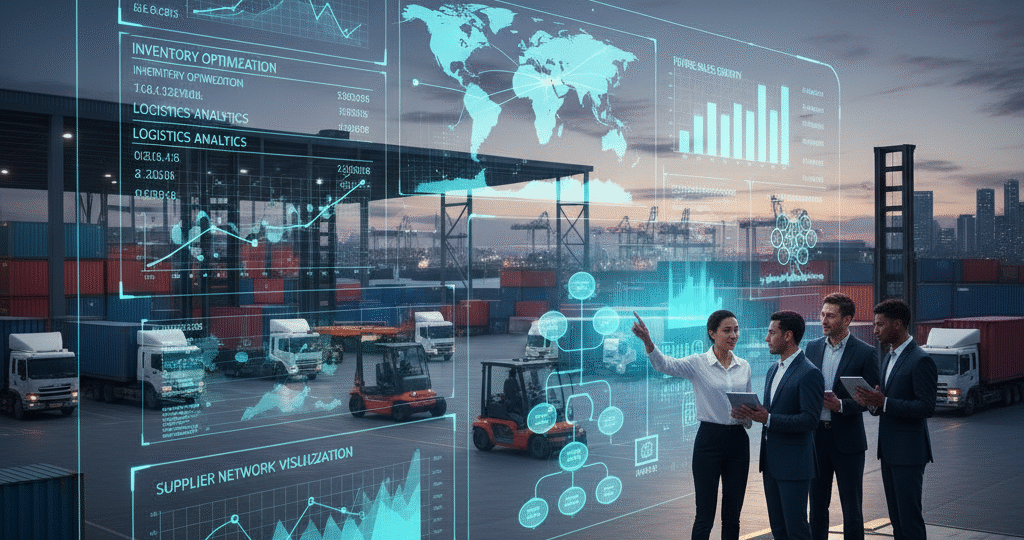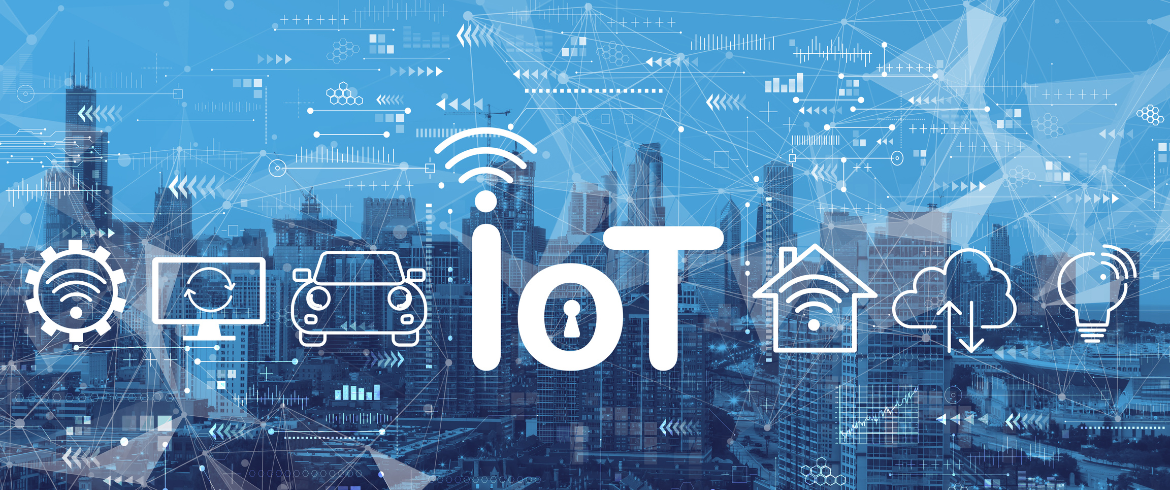How IoT and AI Are Revolutionizing Supply Chain Forecasting Tools in 2025
December 6, 2025 | by IoT Development Company

The world of supply chain management is changing faster than ever. In 2025, technologies like the Internet of Things (IoT) and Artificial Intelligence (AI) are completely transforming how businesses predict demand, manage inventory, and make supply decisions. These advancements are giving rise to powerful supply chain forecasting tools that help companies make smarter, data-driven choices.
Let’s explore how IoT and AI are revolutionizing supply chain forecasting in 2025 — and why businesses of all sizes need to adapt.
Understanding Supply Chain Forecasting Tools
Before diving into technology, it’s important to understand what supply chain forecasting tools do.
Simply put, these tools help businesses predict future demand, supply levels, production needs, and delivery schedules. They collect and analyze large amounts of data from sales records, supplier information, market trends, and logistics systems.
In 2025, modern supply chain forecasting tools don’t just look at past data — they use real-time insights and predictive analytics powered by IoT and AI to deliver more accurate results.
This shift means companies can now forecast changes almost as they happen, not weeks or months later.
The Role of IoT in Modern Supply Chain Forecasting
The Internet of Things (IoT) refers to a network of connected devices — sensors, machines, and systems — that collect and share data automatically. In supply chains, IoT connects everything from delivery trucks to factory equipment and warehouse shelves.
a. Real-Time Data Collection
IoT sensors constantly gather information such as:
- Product movement and location
- Warehouse temperature and humidity
- Vehicle routes and delivery times
- Machine performance in manufacturing lines
This real-time data gives supply chain managers a live view of operations. Instead of relying on delayed reports, they can track goods instantly and respond to changes quickly.
b. Improved Demand Forecasting
IoT-enabled devices help businesses understand customer demand more accurately. For example, smart shelves in retail stores can track how fast certain products sell. This data flows directly into demand forecasting software, allowing managers to predict restock needs before products run out.
c. Greater Visibility and Control
IoT improves visibility across the entire supply chain. When combined with AI forecasting tools, it allows for automatic alerts and quick adjustments — such as rerouting shipments or updating production schedules in response to real-time disruptions.
How AI and Machine Learning Are Changing Forecast Accuracy
Artificial Intelligence (AI) and machine learning in supply chain are taking forecasting to the next level. Instead of relying on static models, these systems learn and improve with every new data input.
a. Predictive Analytics in Logistics
AI uses predictive analytics to identify patterns in supply chain data. It analyzes factors such as market trends, seasonal demand, and even social media activity to forecast customer needs. This helps businesses plan better and reduce waste.
For instance, a company might use AI to predict when raw material shortages are likely to occur and adjust orders in advance. This level of foresight wasn’t possible with traditional forecasting methods.
b. Adaptive Learning
AI-powered supply chain forecasting tools continuously improve over time. As new data is collected through IoT sensors, the AI model learns from it — refining future predictions automatically.
This adaptive learning makes forecasts more accurate and responsive to unexpected events like sudden demand surges or shipping delays.
c. Automation and Decision Support
AI doesn’t just forecast; it also helps make decisions. Modern tools can suggest the best supplier, shipping route, or inventory level. By automating repetitive forecasting tasks, AI frees up time for supply chain planners to focus on strategy and innovation.
The Power of Real-Time Data Forecasting
In 2025, real-time data forecasting has become the new standard. Thanks to IoT devices and AI analytics, supply chain systems can now update forecasts instantly as new data arrives.
For example, if a shipment is delayed due to weather, the system can immediately adjust delivery predictions and inform the customer. Similarly, if sales suddenly rise for a product, the forecasting tool can trigger automatic restock orders.
This instant data flow reduces delays, minimizes stockouts, and keeps the entire supply chain running smoothly. It also helps businesses react faster to market changes, giving them a strong competitive advantage.
Key Benefits of AI and IoT in Supply Chain Forecasting
Let’s look at the major benefits companies are seeing in 2025:
a. Higher Forecast Accuracy
By combining IoT data and AI models, forecasts become much more precise. Businesses can now predict customer demand with over 90% accuracy in many cases.
b. Cost Reduction
Accurate forecasting reduces excess inventory and storage costs. It also prevents emergency shipments or last-minute supplier changes that can be expensive.
c. Faster Decision-Making
AI forecasting tools analyze millions of data points in seconds. This helps managers make quick, data-driven decisions, even in complex global supply chains.
d. Improved Customer Satisfaction
When businesses predict demand correctly, products are available when customers need them. This leads to fewer delays, better delivery times, and stronger brand loyalty.
e. Sustainable Operations
Accurate forecasting reduces waste and energy use by avoiding overproduction. Many companies are now using these tools to build greener, more sustainable supply chains.
Real-World Examples in 2025
Many organizations across different industries are already using AI and IoT-based supply chain forecasting tools successfully:
- Retailers use AI forecasting tools to predict seasonal trends and customer buying habits.
- Manufacturers rely on IoT sensors to track machine health and predict maintenance needs before breakdowns occur.
- Logistics companies use predictive analytics in logistics to plan routes, avoid delays, and cut fuel costs.
- Food suppliers use real-time data forecasting to reduce waste by matching production with real demand.
These real-world results show how digital transformation is reshaping supply chains worldwide.
Challenges and Considerations
While AI and IoT bring major advantages, there are still challenges to address:
- Data security and privacy: Connected devices must be protected from cyber threats.
- Integration with existing systems: Not all businesses have modern ERP systems to connect easily.
- Training and skill gaps: Teams must understand how to interpret and use AI insights effectively.
Overcoming these challenges requires planning, investment, and the right mix of technology and human expertise.
The Future of Forecasting: Smarter, Faster, and More Connected
Looking ahead, the next generation of supply chain forecasting tools will be even more advanced. We’ll see deeper integration between AI, IoT, blockchain, and cloud technologies.
Future tools will not only predict what’s coming — they’ll automatically act on it, adjusting operations instantly without human input. This means fully autonomous supply chains where forecasting and decision-making happen continuously and intelligently.
Conclusion
In 2025, IoT and AI are at the heart of supply chain transformation. By merging real-time data from connected devices with advanced predictive algorithms, businesses can forecast more accurately, operate more efficiently, and deliver better results to customers.
The combination of AI forecasting tools and IoT in supply chain is no longer a future trend — it’s today’s reality. Companies that invest in these technologies now will lead the way toward smarter, more resilient, and sustainable supply chains in the years ahead.
RELATED POSTS
View all


